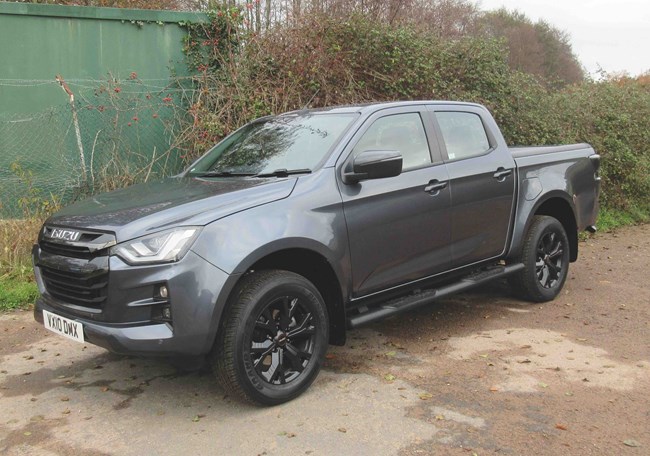- Orders open for Ineos Grenadier Commercial
- Toyota Hilux range gains new rally-inspired GR Sport II variant
- Remarketing: Pick of the bunch
- GA Commercial acquires first vans through Vanaways
- 'Luxury' tax on expensive pick-up trucks suggested
- ADVERTISEMENT FEATURE: Essential advice to avoid the van fleet ICE-berg
- ETRUX launches new Ford E-Transit Trizone
- Renault gives UK debut to Master E-Tech at CV Show
- Isuzu D-Max long-term test – Latest Report
- Isuzu D-Max V-Cross Steel Edition revealed
The What Van? Road Test: Isuzu D-Max (2023)
Date: Monday, January 22, 2024

There’s nothing wrong with giving an existing model a modest makeover and that is what Isuzu has done with its D-Max pick-up. The result was on display at last April’s Commercial Vehicle Show at Birmingham’s National Exhibition Centre, and surely nobody could take exception to the subtle changes.
The entire range is now graced by a redesigned front grille, and the All-Purpose and Adventure versions have been given new wheels too. New colours and upholstery changes have been introduced, and a rear differential lock is now listed as an option on manual 4x4 Utility variants.
Additionally, the D-Max line-up is impressively broad.
The entry-level Business range encompasses 4x2 and 4x4 single-cabs, 4x4 extended-cabs, and 4x4 double-cabs, all of which bear the Utility brand. Extended-cab and double-cab versions are offered with an automatic transmission as an alternative to the manual box.
The middle-ranking All-Purpose portfolio embraces extended-cab and double-cab 4x4 models with either a manual or an auto box and with the DL designation. That tells you that a diff lock is a standard feature.
The top-of-the-range Adventure line-up is somewhat narrower, consisting solely of the V-Cross double-cab in both manual and automatic guise.
Bear in mind that all extended and double-cab D-Max pick-ups weigh less than 2,040kg unladen. This means they’re subject to car rather than commercial vehicle speed limits, which gives them the edge over many rivals.
Goods vehicle limits are 10mph lower than car limits on single and dual-carriageways. As a consequence, D-Max can achieve better journey times than competitors while remaining legal.
No matter which D-Max you choose, you are faced with the same engine; a 1.9-litre 164hp diesel.
We got to grips with the V-Cross automatic four-door five-seater double cab. Here’s how we fared.
View The WhatVan Digital Edition


